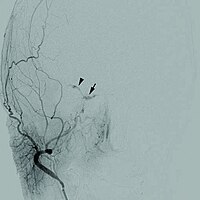
Photo from wikipedia
Introduction: Culturally and linguistically diverse (CALD) communities are growing globally. Understanding patterns of cerebrovascular disease in CALD communities may improve health outcomes through culturally specific interventions. We compared rates of… Click to show full abstract
Introduction: Culturally and linguistically diverse (CALD) communities are growing globally. Understanding patterns of cerebrovascular disease in CALD communities may improve health outcomes through culturally specific interventions. We compared rates of transient ischaemic attack (TIA)/stroke (ischaemic stroke, intracerebral haemorrhage) and stroke risk factor prevalence in overseas and Australian-born people in South Western Sydney (SWS) and New South Wales (NSW). Methods: This was a 10-year retrospective analysis (2011–2020) of SWS and NSW age-standardized rates per 100,000 person-years of TIA/stroke. Data were extracted from Health Information Exchange and Secure Analytics for Population Health Research and Intelligence systems. Rates of hypertension, type 2 diabetes mellitus (T2DM), atrial fibrillation (AF), smoking, and obesity were also calculated. Results: The SWS and NSW age-standardized rate of TIA/stroke for people born in Australia was 100 per 100,000 person-years (100/100,000/year). In SWS, 56.6% of people were overseas-born compared to 29.8% for NSW. The age-standardized rate of TIA/stroke for Polynesian-born people was more than double that of Australian-born people (p < 0.001). Hypertension (33 [SWS] vs. 27/100,000/year [NSW]) and T2DM (36 [SWS] vs. 26/100,000/year [NSW]) were the most common risk factors with rates >50/100,000/year (hypertension) and >80/100,000/year (T2DM) for people born in Polynesia, Melanesia, and Central America. Rates of T2DM, AF, and obesity for Polynesian-born people were over threefold greater than people born in Australia. Discussion/Conclusion: Greater rates of TIA/stroke were observed in specific CALD communities, with increased rates of cerebrovascular risk factors. Culturally specific, targeted interventions may bridge health inequalities in cerebrovascular disease.
Journal Title: Cerebrovascular Diseases
Year Published: 2022
Link to full text (if available)
Share on Social Media: Sign Up to like & get
recommendations!